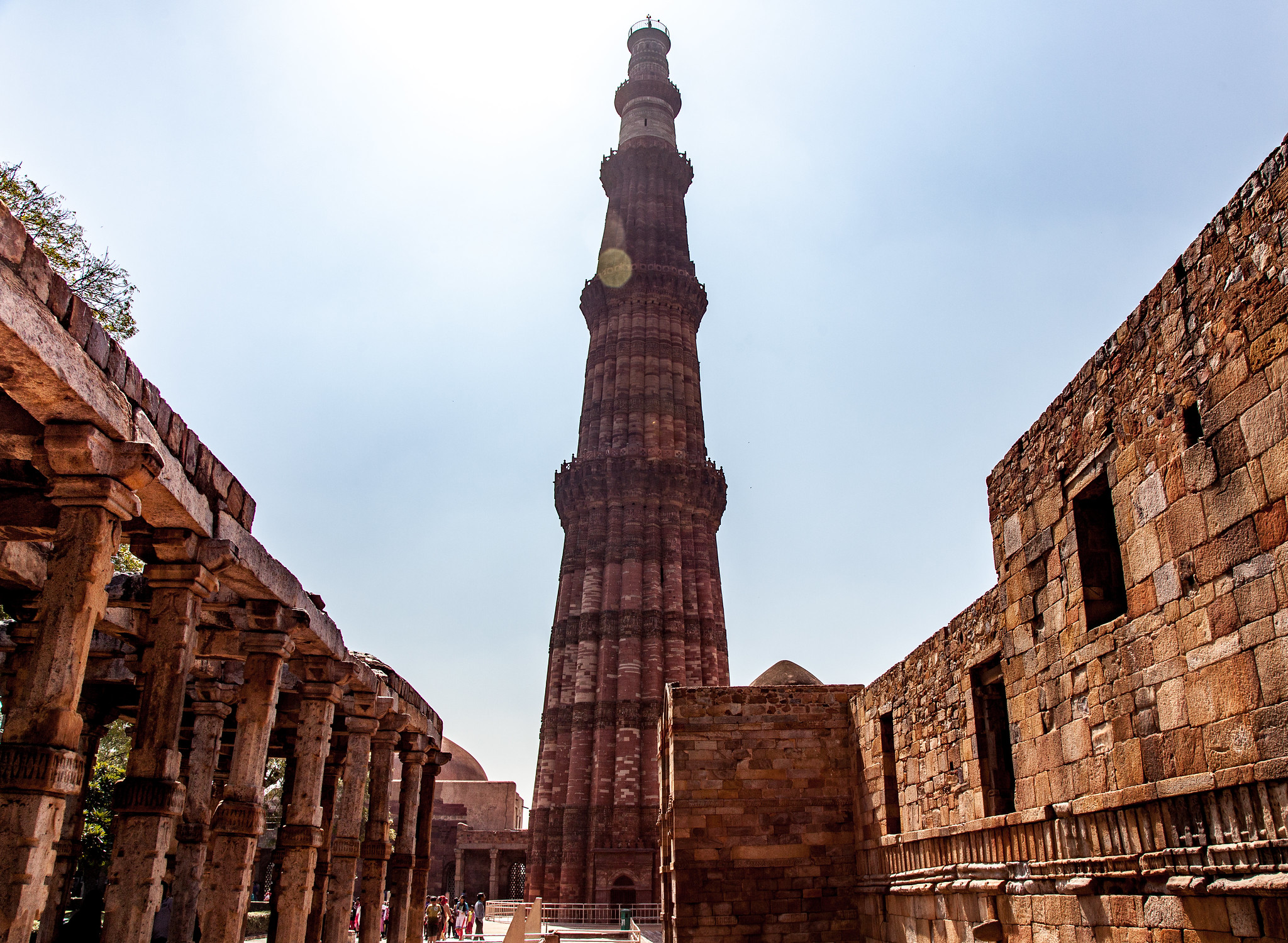Qutub Minar is a towering minaret located in Delhi, India. Built in the early 13th century, it stands as a masterpiece of Indo-Islamic architecture and is a UNESCO World Heritage Site. The monument reaches a height of 72.5 meters (238 feet) and consists of five distinct storeys, each adorned with intricate carvings and inscriptions. Constructed primarily of red sandstone and marble, Qutub Minar was commissioned by Qutb ud-Din Aibak, the founder of the Delhi Sultanate, and later completed by his successors. It serves as a testament to the rich cultural heritage of medieval India and remains one of the country’s most iconic landmarks, attracting thousands of visitors each year.
Standing tall in the heart of Delhi, the Qutub Minar is a testament to the rich architectural heritage of India. This towering minaret, with its intricate carvings and imposing presence, has captivated visitors for centuries. As you approach the complex, the first thing that strikes you is the sheer scale of the structure. At 73 meters high, it’s not hard to see why the Qutub Minar has become one of Delhi’s most recognizable landmarks.
But it’s not just the height that makes this monument special. The real magic lies in the details. As you get closer, you’ll notice the intricate patterns and designs that adorn the tower’s exterior. These aren’t just random decorations – they’re a carefully crafted blend of Islamic and Indian architectural styles, telling the story of a time when different cultures were coming together in exciting new ways.
The tower is made up of five distinct stories, each with its own unique character. The lower three stories are made of red sandstone, while the upper two are crafted from marble and sandstone. This combination of materials gives the Qutub Minar a striking appearance, with the reddish-pink base gradually transitioning to a lighter hue as your eyes move upward.
But let’s talk about those carvings. Oh boy, those carvings! They’re like a history book written in stone. As you walk around the base of the tower, you’ll see verses from the Quran beautifully inscribed into the sandstone. These aren’t just any old inscriptions – they’re works of art in their own right, with flowing calligraphy that seems to dance across the surface of the stone.
And it’s not just Islamic influences you’ll spot. Look closely, and you’ll see elements of traditional Indian design woven into the mix. Floral patterns, geometric shapes, and even some figures (though these are rare in Islamic art) all come together to create a visual feast that’ll have you reaching for your camera every few steps.
Now, you might be wondering why this tower was built in the first place. Well, it’s got a pretty interesting backstory. Construction began way back in 1193, under the orders of Qutb-ud-din Aibak, the first Muslim ruler of Delhi. He wanted to create a tower that would symbolize the might of Islam and serve as a victory monument. Talk about making a statement!
But here’s the kicker – Qutb-ud-din Aibak didn’t live to see his grand project completed. In fact, it took several generations of rulers to finish the Qutub Minar, with each adding their own touch to the design. This long construction period is part of what makes the tower so unique – it’s like a architectural time capsule, showing how styles and techniques evolved over the years.
As you explore the complex, you’ll also notice that the Qutub Minar isn’t alone. It’s surrounded by other historical structures, including the remains of early mosques and even older Hindu and Jain temples. This juxtaposition of different religious buildings side by side is a powerful reminder of India’s diverse cultural heritage.
So, next time you’re in Delhi, make sure to set aside some time to visit the Qutub Minar. Trust me, it’s worth it. Bring a good pair of walking shoes, a camera, and a sense of wonder. As you stand in the shadow of this ancient tower, you’ll be joining countless others who have marveled at its beauty over the centuries. And who knows? You might just find yourself inspired to learn more about the fascinating world of Indo-Islamic architecture.
The Qutub Minar stands as a testament to India’s rich architectural heritage and complex historical narrative. This iconic minaret, with its intricate carvings and imposing height, exemplifies the fusion of Islamic and Indian styles that characterized the Delhi Sultanate period. As a UNESCO World Heritage site, it continues to captivate visitors and scholars alike, offering insights into medieval craftsmanship, religious symbolism, and the cultural exchanges that shaped the Indian subcontinent. The Qutub Minar not only serves as a remarkable feat of engineering but also as a enduring symbol of Delhi’s historical significance and the lasting impact of successive empires on India’s cultural landscape.

